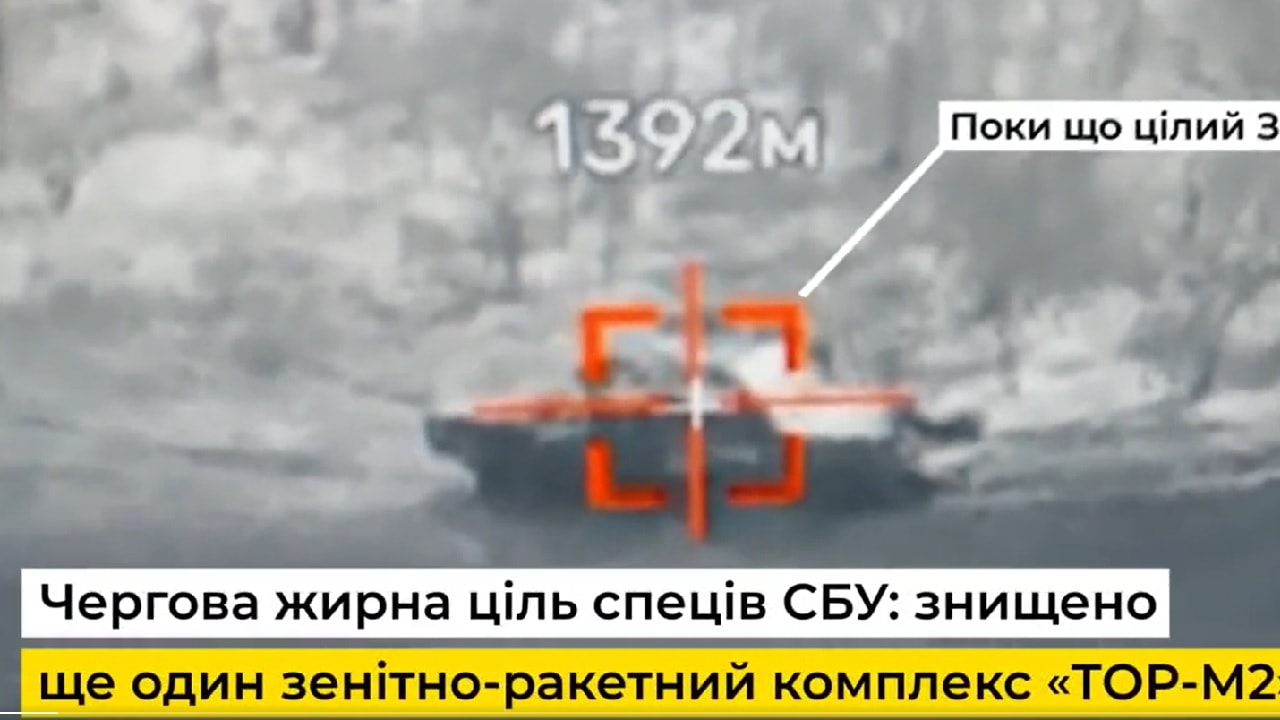A video showing the destruction of a Russian air defense system in Ukraine made the rounds on social media on Tuesday.
In the nearly 30-second-long clip filmed by an unmanned aerial system (UAS) and shared by Ukraine Weapons Tracker (@UAWeapons), a Tor-M2 9A331M TRLAR can be seen as it is struck by a RAM II loitering munition.
The Tor-M2 had taken up position next to a cluster of trees, attempting to conceal its location behind a slight grade.
However, the air defense system was quickly spotted by the Ukrainian drone, and subsequently targeted by the RAM II. It would appear that within moments of being discovered, the loitering munition was used to take out the Russian vehicle before it even had a chance to react.
It is just the latest example of how drones and loitering munitions have proven to be game changers in the fighting in Ukraine. While there have been plenty of videos that show Russian tanks charging across open fields, practically begging to come under fire; the location of the Tor-M2 suggests this crew was more experienced. It found an ideal spot to set up, at least until it was spotted by the drone.
The crew of the Russian Tor-M2 – an improved version of the original Cold War-era air defense system (NATO reporting name SA-15 “Gauntlet”) – likely didn’t even know it was being targeted until it was too late.
Drone On
The Ukrainian-designed developed and produced loitering munition can fly for up to 55 minutes or out to approximately 30 km (18 miles), while it is armed with a 3kg (6.6 pounds) explosive warhead.
The RAM II can be launched from a small catapult, and its time-to-flight is only ten minutes. It is powered by a pusher-mounted engine that drives a two-bladed propeller unit. The platform, which is an improved version of the Leleka-100 drone, is even more accurate than artillery, with an accuracy of one meter (3.3 feet) from a detonation site.
What is also noteworthy about the RAM II, which features a missile-like cylindrical fuselage, is that it can be equipped with different types of warheads – including thermobaric, which are designed to hit targets inside of buildings as well as small armored vehicles; high explosive anti-tank (HEAT) that are specifically meant to be used against heavily armored targets on land or at sea; and HE/fragmentation (high-explosive fragmentation) that is designed to hit enemy personnel in an open space.
Spec Ops Weapons of Choice
According to the social media post, the RAM II was operated by a unit of the SBU “Alpha” SSO – Ukraine’s elite Special Forces and a branch of the nation’s Security Service. It has been operating in the Donetsk region of Eastern Ukraine and played a key role in the defense of Kharkiv, and later took part in Ukraine’s counteroffensive last fall.
#Ukraine: The SBU “Alpha” SSO destroyed a Russian 9A331M TLAR of the Tor-M2 air defence system using a Ukrainian-made RAM II loitering munition. pic.twitter.com/Q9SyVtEu02
— ???????? Ukraine Weapons Tracker (@UAWeapons) March 28, 2023
The Alpha Group has been among the Ukrainian units that have been employing drones against high-value targets. Already this month four Russian Tor air-defense systems have been destroyed in similar attacks.
Author Experience and Expertise: A Senior Editor for 19FortyFive, Peter Suciu is a Michigan-based writer. He has contributed to more than four dozen magazines, newspapers, and websites with over 3,200 published pieces over a twenty-year career in journalism. He regularly writes about military hardware, firearms history, cybersecurity, politics, and international affairs. Peter is also a Contributing Writer for Forbes and Clearance Jobs. You can follow him on Twitter: @PeterSuciu.

